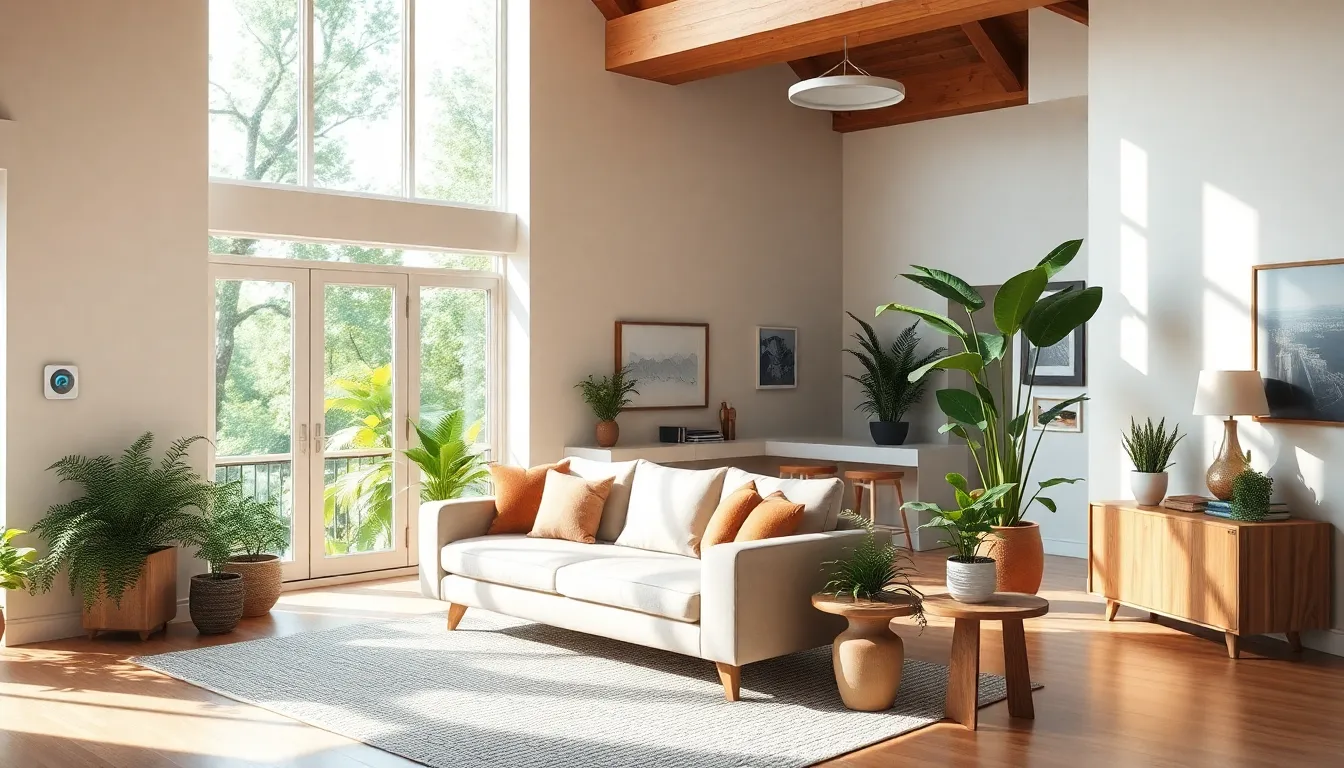In an era where personal expression and lifestyle integration drive home aesthetics, understanding interior design trends has never been more crucial. Homerocketrealty, a leader in contemporary home solutions, embraces innovative design principles to enhance both functionality and style. This article delves into the latest trends, popular styles, and expert tips that can transform any living space into a sanctuary.
Table of Contents
ToggleUnderstanding Interior Design Trends

The world of interior design is ever-evolving, with new trends emerging to reflect the changing tastes and lifestyles of homeowners. One prominent trend is the embrace of open-concept spaces that promote fluid movement and social interaction. This layout encourages versatility, allowing homeowners to adapt their spaces creatively.
Besides, the integration of biophilic design, where nature influences interiors, has gained momentum. Homeowners are incorporating natural materials, such as wood and stone, to connect indoor environments with the outdoors. This trend not only enhances aesthetics but also promotes well-being by creating calming spaces.
Smart technology is increasingly shaping design trends. Homeowners are more inclined to incorporate smart home devices seamlessly into their interiors, which simplifies everyday tasks and enhances security without compromising style.
Popular Design Styles for Homeowners
Homeowners often seek specific design styles that resonate with their personalities and lifestyles. Some popular styles include:
- Modern Minimalism: Focuses on simplicity, functionality, and clean lines, utilizing a neutral color palette and limited décor.
- Mid-Century Modern: Characterized by its bold colors and organic shapes, this style celebrates vintage aesthetics while integrating contemporary elements.
- Industrial: Inspired by urban lofts, this design incorporates raw materials, exposed brick, and metal fixtures to create a rugged yet sophisticated look.
- Scandinavian: Emphasizes light, neutral shades and functional, cozy furniture, marrying practicality with aesthetics for a warm and inviting atmosphere.
Each of these styles offers unique characteristics that cater to different preferences, allowing homeowners to create a space that genuinely reflects their identity.
Creating Functional Home Spaces
Functionality is at the core of effective interior design. Creating spaces that are not only visually appealing but also practical is essential for modern homeowners.
One effective approach is utilizing multi-functional furniture, which maximizes space in smaller homes. For example, a sofa bed offers both seating and sleeping solutions, making it ideal for limited areas. Besides, effective layout planning is vital. Arranging furniture to help easy movement and interaction can elevate daily living experiences.
Plus, designated zones within open-concept designs can enhance functionality. Clear differentiation between areas, such as workspaces and relaxation zones, not only improves organization but also enhances the productivity and comfort of the space.
Incorporating Technology in Interior Design
As technology continues to advance, integrating smart features into homes is becoming increasingly desirable. Smart home automation systems allow homeowners to control lighting, temperature, and security through their smartphones.
Also, modern appliances that blend seamlessly with kitchen design are a necessity for the tech-savvy homeowner. Refrigerators with touch screens, ovens that can be preheated remotely, and automated lighting systems enhance convenience and efficiency without detracting from design aesthetics.
These technological advancements not only streamline tasks but also contribute to energy efficiency, promoting a sustainable lifestyle while keeping homes stylish.
Sustainable and Eco-Friendly Design Practices
Sustainability is no longer just a trend: it’s become a vital aspect of responsible interior design. Homeowners are increasingly opting for eco-friendly materials and practices that reduce their carbon footprint.
The Role of Color in Interior Design
Color choice plays a significant role in sustainable design. Earthy tones and natural hues promote a connection to the outdoors and create calming environments. Also, non-toxic paints and finishes are essential for maintaining indoor air quality while ensuring safety for families.
Maximizing Natural Light in Your Spaces
Incorporating large windows and reflective surfaces can dramatically enhance the natural light in a home, reducing the need for artificial lighting. This not only conserves energy but also creates a warmer and more inviting atmosphere.
Personalizing Your Home with Accessories
Accessories play a critical role in making a space unique. Sustainable décor items, such as reclaimed wood furniture, handmade textiles, and locally sourced art, can add personality while supporting eco-friendly practices.
Expert Tips for Home Staging
Home staging is a crucial step in preparing a property for sale. It not only highlights the home’s strengths but also helps potential buyers envision themselves living in the space.
Here are some expert tips:
- Declutter and Depersonalize: Remove personal items and excess furniture to create an inviting and neutral space that potential buyers can visualize.
- Focus on Curb Appeal: First impressions matter. Enhance the exterior with clean landscaping and a fresh coat of paint on the front door to make it inviting.
- Create a Welcoming Atmosphere: Use neutral colors, proper lighting, and well-placed furniture to create a comfortable flow and inviting ambiance throughout the home.
By leveraging these staging techniques, homeowners can significantly increase interest and potentially secure a quicker sale at a favorable price.
Conclusion
Interior design is a blend of art and functionality, deeply influenced by current trends and technological advancements. By understanding these elements, homeowners can embrace personalized solutions that not only enhance their living spaces but also reflect their lifestyles. Whether through sustainable practices, modern styles, or smart technology, the right interior design choices can transform a house into a home, making it a true reflection of who they are.



